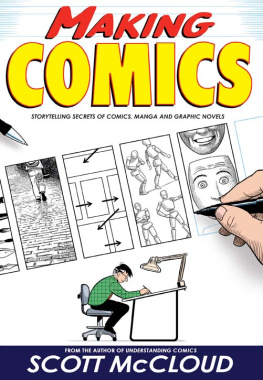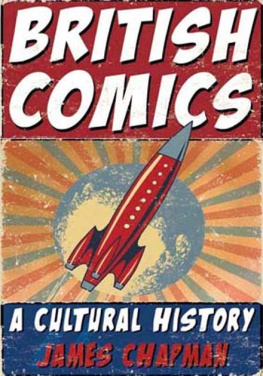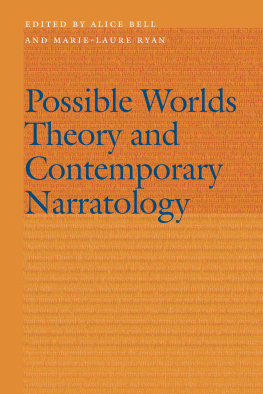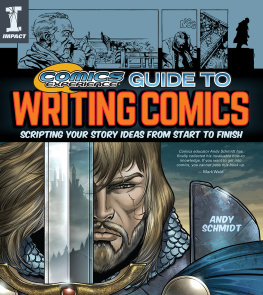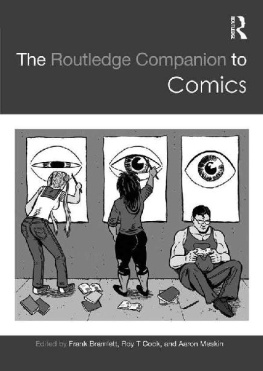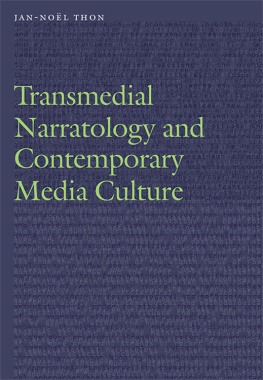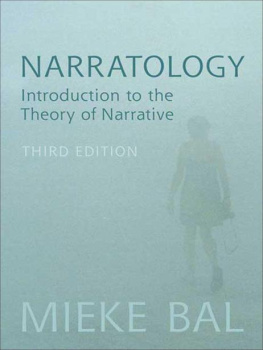
The Narratology of Comic Art
By placing comics in a lively dialogue with contemporary narrative theory, The Narratology of Comic Art builds a systematic theory of narrative comics, going beyond the typical focus on the Anglophone tradition. This involves not just the exploration of those properties in comics that can be meaningfully investigated with existing narrative theory, but an interpretive study of the potential in narratological concepts and analytical procedures that has hitherto been overlooked as well. This research monograph is, then, not an application of narratology in the medium and art of comics, but a revision of narratological concepts and approaches through the study of narrative comics. Thus, while narratology is brought to bear on comics, equally comics are brought to bear on narratology.
Kai Mikkonen is Associate Professor of Comparative Literature at the University of Helsinki, Finland.
Routledge Advances in Comics Studies
Edited by Randy Duncan, Henderson State University
Matthew J. Smith, Radford University
1 Reading Art Spiegelman
Philip Smith
2 The Modern Superhero in Film and Television
Popular Genre and American Culture
Jeffrey A. Brown
3 The Narratology of Comic Art
Kai Mikkonen
First published 2017
by Routledge
711 Third Avenue, New York, NY 10017
and by Routledge
2 Park Square, Milton Park, Abingdon, Oxon OX14 4RN
Routledge is an imprint of the Taylor & Francis Group, an informa business
2017 Taylor & Francis
The right of Kai Mikkonen to be identified as author of this work has been asserted by him in accordance with sections 77 and 78 of the Copyright, Designs and Patents Act 1988.
All rights reserved. No part of this book may be reprinted or reproduced or utilised in any form or by any electronic, mechanical, or other means, now known or hereafter invented, including photocopying and recording, or in any information storage or retrieval system, without permission in writing from the publishers.
The Open Access version of this book, available at www.taylorfrancis.com, has been made available under a Creative Commons Attribution-Non Commercial-No Derivatives 4.0 license.
Trademark notice: Product or corporate names may be trademarks or registered trademarks, and are used only for identification and explanation without intent to infringe.
Library of Congress Cataloging-in-Publication Data
CIP data has been applied for.
ISBN: 978-1-138-22155-0 (hbk)
ISBN: 978-1-315-41013-5 (ebk)
Typeset in Sabon
by codeMantra
The writing of this book would have been impossible without the University of Helsinki Visiting Fellowship at Clare Hall College, University of Cambridge, 20142015. I am deeply grateful to Maria Nikolajeva, Professor of Education and Director of Childrens Literature Centre of Homerton College, for helping to make that happen. My special thanks are also due to John Calton, Matti Hagelberg, Essi Varis, Philip Jenkins, and Mark Shackleton, and the anonymous readers of Routledge Advances in Comics Studies, for reading earlier drafts of this work. Thank you, Matti, for your artwork and the enjoyable experience of teaching a course together on comics storytelling at the University of Helsinki in 2013. Over the past decade, my work has profited greatly from the input from colleagues and friends involved in the Nordic Network for Comics Research (NNCORE) and the comics studies research committee of the International Comparative Literature Association (ICLA). I am very grateful for the sense of scholarly community and real friendship that I have enjoyed with the members of these two groups.
Portions of earlier versions of some chapters have first appeared in the journals Partial Answers 6.2 (2008), American Studies/Amerikastudien 56.4 (2011), International Journal of Comic Art 13.2 (2011), and Scandinavian Journal of Comic Art 1 (2012), and in the anthologies The Rise and the Reason of Comics and Graphic Literature (Eds. Joyce Goggin and Dan Hassler-Forest, 2010), From Comic Strips to Graphic Novels (Eds. Daniel Stein and Jan-Nol Thon, 2013, 2nd edition 2015), and Dialogue across Media (Eds. Jarmila Mildorf and Bronwen Thomas, 2017). I would like to express my gratitude to the publishers and the editors for their permission to reproduce this material here. In the same vein, I would like to extend great thanks to all the copyright holders who have generously given the permission to reproduce the images included here.
I first learned to read by reading comics with my father when I was around 5 or 6 years old. For all I know, my father never read comics by himself, except perhaps when browsing comic strips in his morning newspaper, but he wanted to teach me how to read. Thats why we ended up reading my comic books. He would hyphenate all the words, syllable by syllable, in the speech balloons with his marker pen on some randomly chosen page and then read the words to me one syllable at a time (Figure I.1).

Later I have often wondered what it was in these childrens comics, possibly Donald Duck or Bugs Bunny, or in my fathers method, that helped me to learn. One reason, definitely, must be the images that I could follow on my own and that I had already encountered. It was exciting to make the connection between the words and the drawings, the characters who were speaking and the situation at hand. The words added new significance to the images and shifted my previous understanding, but I am convinced that the narrative form of these comic books also had something to do with it. Learning the words enhanced the story, making it fuller, perhaps funnier, more thrilling, and more nuanced, while in pleasant symbiosis, the continuing story told in images made it easier to figure out what the words meant and how they related to everything that I could see in the images.
* * *
This book has two main objectives. First, by placing comics into lively dialogue with narrative theory, The Narratology of Comic Art builds a systematic theory of narrative comics. This involves not just the identification of those properties in comics that can be meaningfully investigated by means of narrative theory, but a study of the potential in the narratological approach that has hitherto remained overlooked in this field as well. Comics studies is experiencing an exciting period of growth and diversification, and as interest in exploring the connections between comics and narrative theory increases, it is all the more important to carefully think through what is specific to the medium. A comprehensive narratological engagement with comics will allow us to do just that, and contribute to our understanding of comics narrative devices, conventions, and strategies.
Second, the development of the narratology of comic art entails the identification of the kinds of problems that we encounter in employing narrative theory in comics studies. Many of these problems stem from the historical fact that narratologythe formal, systematic study of narrative representationhas been more extensively developed in literary research than in other fields. This book, then, is not a mere application of existing narratology to the medium, but it also offers a revision of narratological concepts and approaches through the study of narrative comics. Thus, while narrative theory is brought to bear on comics, comics are equally brought to bear on narrative theory.


